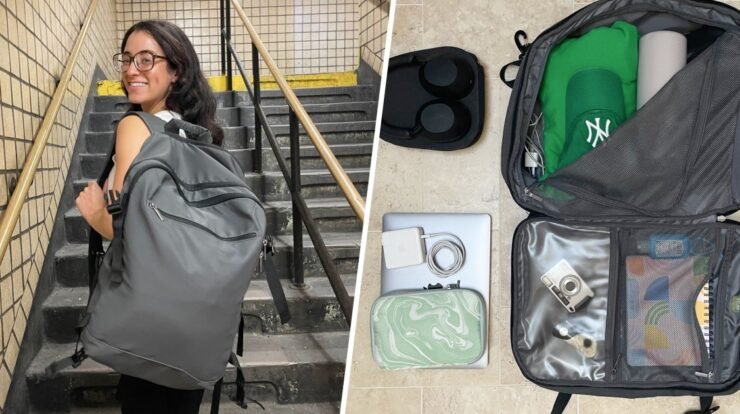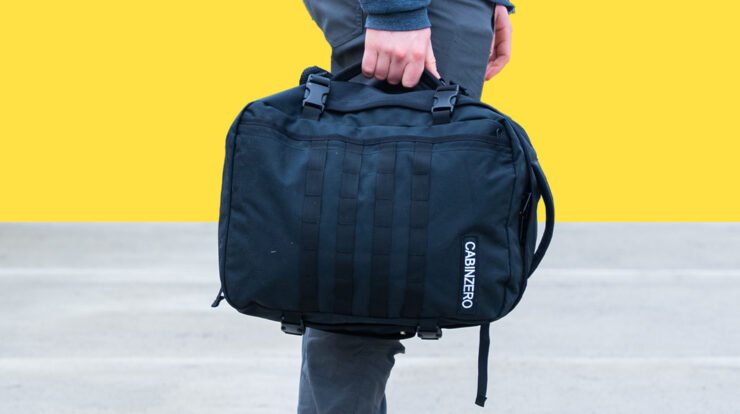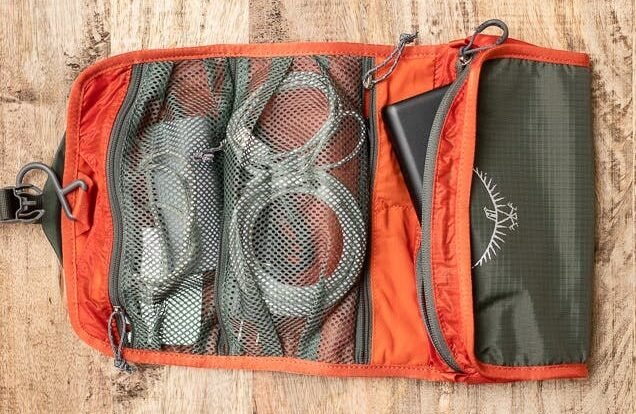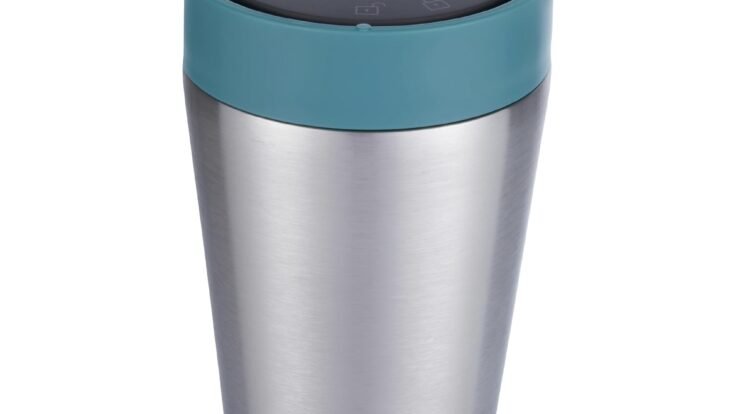When it comes to travel backpacks, few brands command the respect and loyalty that Osprey does. For over a decade, the Osprey Farpoint 55 Men’s Travel Backpack has been a go-to choice for globetrotters, digital nomads, and adventure seekers. As a seasoned traveler and style-conscious blogger who’s hauled gear across five continents, I’ve tested countless packs, but the Farpoint 55 stands out for its blend of functionality, durability, and sleek design. In this in-depth review, I’ll break down why this backpack is a game-changer for anyone serious about travel, from its carry-on-friendly size to its thoughtful features that make it a versatile companion for any journey.

A Perfect Balance of Size and Versatility
The Osprey Farpoint 55 is a two-in-one system, combining a 40L main pack with a 15L detachable daypack, totaling 55 liters of storage. This capacity hits a sweet spot for travelers who want to pack light without sacrificing essentials. Whether you’re embarking on a two-week Southeast Asia adventure or a month-long European odyssey, this backpack offers enough space for clothes, toiletries, and gear while staying within most airline carry-on limits. The main pack’s dimensions (25”H x 13”W x 12”D for M/L) make it compliant with overhead bin restrictions, while the detachable daypack slides neatly under the seat as a personal item.
What sets the Farpoint 55 apart is its versatility. The main pack functions like a suitcase, with a front-loading panel that unzips fully for easy access to your gear. No more digging through a top-loading bag to find that one shirt buried at the bottom. The daypack, meanwhile, is a lifesaver for day trips, city explorations, or carrying electronics like a 15-inch laptop or tablet in its padded sleeve. I’ve used the daypack for everything from hiking trails in Peru to navigating crowded markets in Bangkok, and it’s proven both practical and lightweight.
Designed for Comfort on the Move
One of the standout features of the Osprey Farpoint 55 is its suspension system, a rarity in travel backpacks. Borrowing technology from Osprey’s technical hiking packs, the Farpoint 55 features a LightWire frame, adjustable shoulder straps, and a padded hip belt that distribute weight evenly across your body. This makes it incredibly comfortable, even when fully loaded with up to 50 pounds of gear. During a recent trek through Morocco, I carried the pack for hours through bustling medinas and desert trails, and the breathable mesh back panel kept me cool while the hip belt took the strain off my shoulders.
The adjustable torso fit is another win, allowing you to fine-tune the harness to your body. Available in S/M (for 15-19-inch torsos) and M/L (for 17-22-inch torsos), the pack ensures a custom fit for a wide range of body types. I’m 5’10” with a medium build, and the M/L size feels like it was made for me. The sternum strap, complete with a rescue whistle, adds an extra layer of security for outdoor adventures—a small but thoughtful touch that could be a lifesaver in an emergency.
For those moments when you’re not wearing the pack, Osprey’s stowaway harness system is a game-changer. The shoulder straps and hip belt tuck neatly behind a zippered flap, transforming the pack into a streamlined duffel. This feature is a godsend when checking the bag for flights, as it prevents straps from getting caught in baggage handling systems. The padded side and top handles also make it easy to grab the pack off a conveyor belt or carry it like a suitcase through busy airports.
Read more: Best Inflatable Foot Rest Travel Pillow for Long-Haul Comfort
Durability That Stands the Test of Time
Osprey’s reputation for quality shines through in the Farpoint 55’s construction. The pack is made from 450D recycled twist dobby polyester, a sustainable, bluesign®-approved material that’s both lightweight and tough. High-wear areas are reinforced with durable fabrics, and the exterior is treated with a PFAS-free durable water-repellent (DWR) coating to shrug off light rain. After years of rough travel—think being tossed into bus cargo holds, dragged across cobblestone streets, and stuffed into packed train compartments—my Farpoint 55 shows minimal wear. The zippers are still smooth, the buckles intact, and there’s not a single tear in the fabric.
Osprey’s All-Mighty Guarantee further cements the pack’s value. If anything breaks or wears out, Osprey will repair or replace it for free, no matter when you bought it. I had a minor issue with a buckle after three years of heavy use, and Osprey’s customer service was quick to send a replacement part, no questions asked. This kind of reliability makes the Farpoint 55 a worthy investment for long-term travelers.
Organization and Accessibility Done Right
While some travel backpacks overwhelm with excessive pockets and compartments, the Farpoint 55 keeps things simple yet effective. The main compartment is a spacious, open cavity with two internal compression straps to keep your gear secure. A large mesh pocket on the inner flap is perfect for stashing dirty laundry or small items like socks and underwear. I also appreciate the new side mesh pocket added in recent updates, which is great for organizing smaller essentials.
The daypack, while basic, is thoughtfully designed for daily use. It features a lockable main compartment, a padded laptop/tablet sleeve, and stretchy side pockets for water bottles or snacks. However, the daypack’s flat back panel, designed to sit flush against the main pack, sacrifices some comfort compared to standalone daypacks. If you plan to carry heavy loads in the daypack for extended periods, you might prefer pairing the Farpoint 40 with a more ergonomic daypack like the Osprey Daylite Plus.
One minor gripe is the lack of external elastic pockets on the daypack for quick-stash items like a rain jacket. Additionally, the main pack could benefit from a few more dividers or pouches for travelers who love hyper-organized packing. That said, I’ve found that packing cubes work wonders to keep everything in order, making the open main compartment more of a feature than a flaw.
Read more: Why Kleenex On-The-Go Facial Tissues Are My Travel Must-Have
The Daypack Attachment: A Love-Hate Relationship
The detachable daypack is one of the Farpoint 55’s signature features, but it’s not without its quirks. In older models, the daypack zipped directly onto the main pack, creating a secure, unified system. The newer design replaces the zipper with straps and buckles, allowing you to attach the daypack in “piggyback” (on the back) or “kangaroo” (on the chest) configurations. While this adds flexibility, the strapped-on daypack can feel less stable, especially when both packs are fully loaded. I’ve found that a heavy daypack tends to sag in piggyback mode, which can throw off the balance.
Personally, I rarely attach the daypack during transit, opting instead to carry it separately or use the kangaroo style for short distances when I need quick access to valuables. The clips are a bit fiddly to secure without help, so if you’re traveling solo, you might skip this feature altogether. Despite these drawbacks, the daypack’s utility as a standalone bag outweighs the attachment issues, and the ability to detach it for day trips remains a major selling point.
Carry-On Convenience for Budget Travelers
For budget-conscious travelers, the Farpoint 55’s carry-on compatibility is a lifesaver. With airlines charging hefty fees for checked luggage, the ability to board with just the main pack and daypack can save you hundreds over the course of a trip. I’ve flown with budget carriers like AirAsia and Indigo, and the Farpoint 55 has fit in overhead bins without issue, even when packed to the brim. Just be sure to check your airline’s specific carry-on restrictions, as some ultra-low-cost carriers like Ryanair have stricter limits.
The pack’s 22-pound (10 kg) weight limit when fully packed aligns well with most airline carry-on allowances, making it ideal for light packers heading to warm climates. If you’re traveling to colder destinations requiring bulkier clothing, you might need to check the bag or opt for the larger Farpoint 70. However, for most trips, the 55L capacity strikes the perfect balance between space and portability.
Read more: Exploring Flare Audio Isolate Aluminium Earplugs Expert Insights for Musicians and Audiophiles
Style Meets Substance
Let’s talk aesthetics. The Farpoint 55 isn’t just a workhorse—it’s a stylish one. Available in four vibrant colorways (Gopher Green, Jasper Red, Muted Space Blue, and Black), the pack has a youthful, sophisticated vibe that appeals to modern travelers. I own the Jasper Red version, and its bold hue makes it easy to spot on luggage carousels while adding a pop of personality to my travel gear. The clean lines and minimalist design also mean it doesn’t scream “backpacker” in urban settings, blending seamlessly into hostels, airports, and city streets.
The pack’s gender-specific fit (with the Fairview 55 as the women’s counterpart) ensures it looks proportional on a range of body types. While technically a men’s pack, I’ve seen women use it comfortably, though those with smaller frames might prefer the Fairview’s shorter torso length and narrower shoulder yoke.
Comparing the Farpoint 55 to Alternatives
How does the Farpoint 55 stack up against other travel backpacks? Compared to the Cotopaxi Allpa 35L, the Farpoint offers more capacity and a detachable daypack, but it lacks the Allpa’s structured organization. The Tortuga Outbreaker 45L is another strong contender, with superior padding and a more polished look, but it’s pricier and doesn’t include a daypack. For those prioritizing trekking, the Farpoint Trek 55 adds a ventilated backpanel and rain cover but sacrifices carry-on compatibility.
Ultimately, the Farpoint 55 shines for its balance of price, durability, and versatility. Retailing at around $180-$220, it’s a mid-range option that delivers premium features without breaking the bank. If you don’t need the daypack, the Farpoint 40 offers the same main pack for about $30 less, while the Farpoint 70 is better for those needing extra space but willing to check their bag.
Who Is the Farpoint 55 For?
The Osprey Farpoint 55 is ideal for:
Backpackers and budget travelers who want a carry-on-friendly pack that maximizes storage without checked bag fees.
Adventure seekers needing a durable, comfortable pack for mixed terrains, from city streets to hiking trails.
Digital nomads looking for a versatile bag with a laptop sleeve and detachable daypack for work and exploration.
First-time travelers who want a reliable, user-friendly pack backed by Osprey’s lifetime guarantee.
It’s less suited for:
Ultra-minimalists who prefer sub-40L packs for short trips.
Trekking enthusiasts who need advanced features like pole attachments or a rain cover (consider the Farpoint Trek instead).
Highly organized packers who rely on multiple compartments and dividers.
Final Thoughts: A Travel Companion Worth Investing In
After years of testing the Osprey Farpoint 55 across deserts, jungles, and urban jungles, I can confidently say it’s one of the best travel backpacks on the market. Its combination of carry-on convenience, robust construction, and thoughtful design makes it a standout choice for anyone who values freedom and flexibility on the road. While the daypack attachment system could use some refinement, it’s a minor flaw in an otherwise exceptional package.
Whether you’re chasing sunsets in Santorini, navigating hostels in Hanoi, or trekking to Machu Picchu, the Farpoint 55 has your back—literally and figuratively. It’s more than just a backpack; it’s a trusted companion that empowers you to travel farther, lighter, and smarter. If you’re ready to elevate your adventures, the Osprey Farpoint 55 Men’s Travel Backpack is the way to go.







